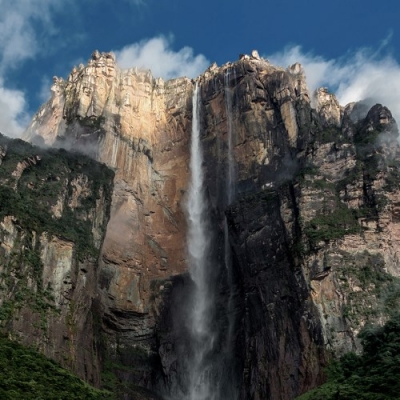
Spectacular Angel Falls is the world’s tallest waterfall. With a drop of 979 m (3,212 ft), it is more than twice the height of New York’s Empire State Building. American pilot Jimmy Angel first spotted the waterfall from the air in 1933.
Lying within the Canaima National Park, Angel Falls is part of the plateau that underlies the lands located in Venezuela to the south of the Orinoco River. The plateau’s age is estimated at two billion years. Important geological transformations can be seen at the park, from its beginnings in the Precambrian period dating back to the time of the formation of the super continent Pangaea.
This continent began to separate due to the formation of a fracture in the planet’s crust resulting in the formation of the Atlantic Ocean, and the creation of different portions of lands called shields. The geographic region in Venezuela, known as the Guyanese Shield, existed from the start as a great plain at an elevation roughly as high as today’s visible tepuis, about 6500 to 9800 feet. After the formation of the great plain, during a long period of time—approximately 400 to 200 million years ago—a series of climate-related phenomena caused important changes in the geography of the Guyanese Shield.
The transformation of the landscape was due to drastic variations of arid climate to humid and vice versa; of strong, constant and lingering precipitations; droughts, freezing, discharges with high and low temperatures; storms, hurricanes, and the tectonic movements of the earth. The erosion was caused by atmospheric agents removing the material deposited in the great plain during millions of years. In places where the rock was less resistant, the erosion was greater resulting in this great transformation, the Tepuis, and the fantastic scenery at the Falls.
Picture Credit : Google
